- Home
- Robert Silverberg
Shadrach in the Furnace Page 3
Shadrach in the Furnace Read online
Page 3
“Shadrach,” he says. His voice is deep, grating, with a narrow dynamic range, not really a good demagogue’s voice. “How am I this morning?”
It is an old joke between them. The Khan laughs; Mordecai manages a bilious smile.
The doctor replies, “Strong, well rested, a little low on blood sugar, but everything generally as expected. Warhaftig is waiting for you. He’d like you in the Surgery by 0900 hours. Mangu’s at the Committee Vector One desk. It’s a quiet day so far.”
“This will be my fourth liver.”
“Your third, sir,” Mordecai says gently. “I’ve been over the records. First transplant in 2005, the second in 2010, and now—”
“I was born with one also, Shadrach. We should count that. I’m human, eh, Shadrach? We mustn’t forget the set of organs I was born with.” Genghis Mao’s inescapable eyes pierce the uneasy Mordecai. Human, yes, one must always try to keep that in mind; the Chairman is human, though his pancreas is a tiny plastic disk and his heart is constantly spurred by electric jolts delivered through fine silver needles and his kidneys were grown in bodies other than his own and his spleen his lungs his corneas his colon his esophagus his pharynx his thymus his pulmonary artery his stomach his yes oh yes human he is human but sometimes it is hard to remember that—and sometimes, looking into those irresistible terrifying glacial eyes, one sees not the godlike flash of supreme authority, but something else, an opaque look of fatigue or perhaps terror, a look that seems at once to reveal an overwhelming fear of death and to offer warm welcome to it. Genghis Mao is death-haunted, certainly, a man whose grasp on life is so ferocious after nine decades that he will submit to any bodily torment in order to buy another month, another year; he lives in morbid dread of death and his eyes proclaim it; but he is death-loving, too, obsessed with the termination that he constantly postpones, as much so as a man who is obsessed with the orgasm he strives so fiercely to delay. Mordecai has heard Genghis Mao speak of the purity of not-being. Not for him the coming of süsser Tod, no, never, and yet how he savors the tempting sweetness of it even as he averts his lips from it. Mordecai suspects that only such a man, death-haunted, death-obsessed, would want to make himself master of the sort of place this world has become. But how can Genghis Mao, brooding dreamily on the delicate beauties of death, nevertheless also yearn to live forever?
“Come for me at 0900,” the Chairman tells him.
Mordecai nods to a dead screen.
3
In the time remaining before he must go to fetch the Khan, Shadrach Mordecai discharges one of his regular bureaucratic responsibilities: receiving the daily progress reports from the directors of the three great research schemes in which Genghis Mao has much of the resources of the government mobilized, Project Talos, Project Phoenix, and Project Avatar. As Genghis Mao’s physician, Shadrach is ex-officio head of all three projects, and he confers each morning with the project leaders whose laboratories are located in the lower levels of the Grand Tower of the Khan.
Katya Lindman of Project Talos comes on screen first. “We coded the eyelids yesterday,” she tells him at once. “It’s one of the biggest steps so far in our analogue-to-digital conversion program. As of now we have seven of Genghis Mao’s three hundred basic kinesic traits fully graphed and equivalented.” She is a short, wide-shouldered woman, a Swede, formidably intelligent, dark-haired and easily angered, a woman of considerable beauty despite or perhaps because of her thin-lipped, sharp-toothed, oddly feral and menacing mouth. Her project is the most farfetched of the three, an attempt to develop a mechanical Genghis Mao, an analogue-entity through which he can continue to rule after bodily death—a puppet, a simulacrum, but one with a sustaining Genghis Mao-like life of its own. The technology for building such an automaton already exists, of course; the problem is to create something that transcends the Walt Disney robots that Mordecai remembers from his youth, the cunning Abe Lincoln and Thomas Edison and Christopher Columbus machines, so lifelike in their skin tones and movements and manner of speaking. Disney machines are not sufficient to the present need. A Disneyed Abe Lincoln can deliver the Gettysburg Address flawlessly, eight times an hour, but it would never be able to deal with a delegation of angry Reconstructionist congressmen; and a Genghis Mao of metal and plastic might spout the tenets of centripetal depolarization with hypnotic eloquence, but what value would that be in meeting the crises of a constantly changing, challenging society? No, they must capture the essence of the living Genghis Mao, code it, make from it a program that will continue to grow and react. Shadrach Mordecai is skeptical of success. He asks Katya Lindman, as he does every few weeks, how her department is coming on the task of digitalizing Genghis Mao’s mental processes, which is rather more difficult than working out digital programs for his facial expressions and habits of posture. The question is threatening to her, and her eyes briefly flash with familiar fire; but all she says is, “We continue to attack the problem. Our best people are constantly at work on it.”
“Thank you,” Shadrach says, and switches to Irayne Sarafrazi’s channel. The head of Project Phoenix is a young Persian gerontologist, a slight, almost fragile-looking person, with huge dark eyes, full solemn lips, black hair pulled back starkly from her forehead. Her group seeks a body-renewal technique that will allow rejuvenation of the living cellular matter of Genghis Mao, so that he may be reborn in his own skin when he no longer has the strength and resilience to accept further organ transplants. The prime obstacle here is the unwillingness of the brain to regenerate the cells it daily sloughs off; reversing the decline of the other organs and making them young again is a relatively simple matter of nucleic-acid reprogramming, but no one has found a way to halt, let alone to recoup, the constant death of the brain. Already in Genghis Mao’s long life the estimated weight of his brain has declined by ten percent, with a corresponding loss in mnemonic function and neural response time; nevertheless he is far from senile, but what hideous decline into idiocy might not overtake him if he were given a further century or two of residence in his present cerebro-cerebellar equipment? Hundreds of hapless primates have surrendered their cranial contents to Irayne Sarafrazi’s research, and their brains live in bell jars on her laboratory benches, alive and responsive while she seeks ways of tickling their neurons into new growth, but no progress has been made. This morning she seems discouraged. Her glittering Achaemenid eyes look dull and strained. The disembodied brain of Pan, a chimpanzee, has suddenly undergone a fatal deterioration, just when it appeared that some actual cellular growth was beginning. “We’re about to begin the autopsy,” Irayne Sarafrazi says dismally, “but we think Pan’s death may mean our whole cerebral stimulation program is a mistake. I’m thinking of switching our emphasis away from actual brain regeneration and toward redundancy activation. What do you think, Shadrach?” Mordecai shrugs. Of course he knows that the human brain has vast redundant areas, billions of cells whose only apparent function is to be an emergency reserve; he knows, too, what has been accomplished by way of rehabilitating the victims of strokes and other cerebral damage through redirecting the neural channels into the redundant areas. But more efficient utilization of existing brain tissue only delays, does not remove, the threat of senile degeneracy. So long as cells daily die, Genghis Mao will tumble eventually into senility in his rejuvenated body, fifty or seventy or ninety years from now, a drooling Struldbrug of the mind trapped in a sturdy requickened frame. “Redundancy is a short-term measure,” Shadrach tells her. “Without brain regeneration, the risks are too high. An old brain in a young body won’t work. Let me see the autopsy report on the chimp tomorrow and maybe I’ll have some ideas.” Unable to bear the sight of her stricken face, he tunes Sarafrazi out and gets Nikki Crowfoot of Project Avatar on his screen.
She smiles tenderly. “Did you sleep well, Shadrach?”
Her strength, and the strength of her concern for him, radiates glowingly from the screen. She is a stalwart woman, an athlete, a huntress, tawny-skinned, big-breasted, nearly
190 centimeters tall, with a strong heavy-boned face, wide-set eyes, wide-lipped mouth, assertive high-bridged nose. Her parents on both sides were Amerindians, Navajo mother, detribalized Assiniboin father. She and Shadrach Mordecai have been lovers for four months, friends for more than a year. Mordecai hopes Genghis Mao knows nothing of their affair, but he suspects it is a naive hope.
He says, “I slept well for a while, anyway.”
“Worrying about the Chairman’s operation?”
“I suppose. Or, maybe just worrying in general.”
“I could have helped you relax,” she says with a sly grin.
“Probably you could. But I’ve always abstained the night before the Chairman undergoes surgery. Like a prizefighter, like an opera singer. To keep the concentration absolutely clear, the mind unblurred. I know it’s silly, Nikki, but it’s something I do.”
“All right. All right. I was only teasing. Anyway, we can make up for it tonight.”
“Tonight, yes. Or this afternoon. We’ll have him off the table by 0230 hours. How would you like to take the tunnel to Karakorum with me?”
Nikki Crowfoot sighs. “Can’t. Don’t tempt me. Critical tests this afternoon. Do you want to hear my report?”
Dr. Crowfoot’s work overlaps, in some respects, both the other projects, for Project Avatar’s goal is to develop a personality-transfer technique that will permit Genghis Mao—his soul, his spirit, his persona, his anima, but no actual physical part of him—to move to another, younger body. Like Project Talos, Avatar strives to reduce the patterns of Genghis Mao’s mental responses to digital—therefore programmable, therefore reproducible—codings; like Project Phoenix, Avatar intends to give the Chairman a new and healthy body in which to dwell. But where Talos would house the digital-coded analogue of Genghis Mao in a mechanical construct. Avatar would use a real body of flesh and blood; and where Phoenix would give the Chairman new vitality by rejuvenating his own body, Avatar would place him in one formerly inhabited by someone else, specifically Mangu. On the one hand Crowfoot’s project would avoid the inhumanity of creating a robot Khan, on the other it would sidestep the problem of brain-cell deterioration by instilling the intangible and abstract essence of Genghis Mao in a young and vigorous brain. Despite the areas of overlap, the three projects conduct their research altogether independently of one another, and no attempts are made at exchanges of ideas. Redundancy, after all, is our main avenue of survival.
Shadrach Mordecai, because he is privy to the work of all three, is perhaps the only one who really knows where they stand in relation to one another. He knows that Katya Lindman’s team is attempting something that is probably hopeless—instilling the soul of a man into a machine will not produce a convincing and politically viable duplicate of the original, machines ordinarily being incapable of transcending their machinehood—and that Irayne Sarafrazi’s group, though it is pursuing the most plausible route toward giving Genghis Mao the eternal life he hungers for, is destined to be blocked by the apparently insoluble brain-decay difficulty. He knows, too, that Nikki Crowfoot’s approach to personality coding has been more fruitful than Lindman’s, and that in a matter of months it may be possible for the scientists of Project Avatar to infuse the essence of Genghis Mao like a pervasive coating of paint over the mind of a donor body whose previous occupant has been obliterated by electroencephalographic mindpick techniques. Poor Mangu. Poor hopeful tragic princeling, destined to be nothing better than a tabula rasa for the Khan.
Mangu’s fate will not be long delayed. Mordecai listens in chilly fascination to Nikki’s recitation of the latest wonders. They have reached the stage where they can code the souls of animals, abstracting from them the unique electrical patterns of their minds, transforming those waveforms into numbers, using the numbers to replicate the electrical patterns within the brains of donor beasts. They have coded a rooster and pumped its soul into a mindpicked hawk; hawk no longer flies, but runs cockadoodling around the chicken coop, clumsily fluttering its magnificent wings and crazily mounting the terrified hens. They have coded a gibbon and housed its mind in a gorilla’s body; gorilla has turned berserkly arboreal, brachiating in wild desperation through the treetops, while its evicted gorilla-essence now resides within a former gibbon that struts ponderously at ground level, leaning on its flexed knuckles and pausing occasionally to pound its scrawny chest. And so on, and so on; they are getting ready to attempt the first human transfers, within a matter of weeks. Mordecai does not ask Crowfoot where she intends to obtain her experimental subjects. There are confusing problems of ethics as it is in this whole business of serving Genghis Mao; he would rather not load his conscience with his beloved’s deeds.
“Call me when the operation’s over,” Nikki Crowfoot tells him.
“Won’t that interrupt your critical tests?”
“Not critically. Call me. I’ll see you tonight.”
“Tonight, yes,” Shadrach says faintly. The time is 0855 hours. He must convey Genghis Mao now to the Surgery.
4
The liver, the body’s largest gland, is a useful and complex organ weighing a kilogram and a half—about two percent of the total body weight—that performs hundreds of significant biochemical functions. The liver produces bile, a green liquid essential to digestion. Through the liver passes exhausted venous blood en route to the heart, blood which the liver filters to remove bacteria, poisons, drugs, and other noxious impurities. To the blood the liver adds the plasma proteins it manufactures, among them the clotting agent fibrinogen and the anticoagulant heparin. From the blood the liver takes sugar, which it converts to glycogen and stores until the body’s energy needs require it. The liver is responsible also for the conversion of fats and proteins into carbohydrates, the storage of fat-soluble vitamins, the manufacture of antibodies, the destruction of outworn red blood cells, and much else.
So many metabolic purposes does the liver serve that no vertebrate can survive more than a few hours without one. So central is it to life that it has extraordinary regenerative powers: if three quarters of the liver is removed, the remaining cells will multiply so rapidly that the gland will regain its original dimensions within two months. Even if ninety percent of the liver is destroyed, it continues to produce bile at the normal rate. Redundancy is our main avenue of survival. Nevertheless the liver is subject to many dysfunctions—the various jaundices, the various necroses, septicemia, dysenteric abscesses, cancer of the bile passages, and so forth. The liver’s totipotence enables it to withstand such dysfunctions for prolonged periods, but its powers of recuperation diminish, like most other things, with age.
Genghis Mao suffers from chronic liver trouble. To sustain his life and the life of the assorted artificial and transplanted organs within him, the Chairman must pour oceans of medication through his system each day, and even the most durable of livers would be hard pressed to handle the constant assault of high-powered chemicals it is asked to filter from Genghis Mao’s bloodstream. Then, too, the presence of so many alien organs sets up biochemical interaction phenomena within the body that the liver must counteract, and the strain is telling. The Chairman’s beleaguered liver is in a perpetually morbid state, aggravated by his great age and the unnatural intricacy of his composite internal structure, and periodically it must be replaced. That time has again come.
Two burly aides lift Genghis Mao’s short, slight figure onto a gurney and the familiar trip from the imperial bedchamber to the operating table commences. The Khan is cheerful, feverish and frail and beady-eyed though he looks; he nods and winks to the aides as they position him, telling them that he is comfortable; he chuckles, he even essays a quip or two. Mordecai is astounded, as always, by the Khan’s incredible calmness at such a moment, as evidenced by the telemetered data reaching his implanted sensors. Surely Genghis Mao knows that there is a significant chance of his dying during the operation, but his somatic output registers no apparent awareness of that—as though the Chairman’s spirit is so neatly balanced betw
een love of life and hunger for death that it floats in perfect metabolic equilibrium. At any rate Shadrach is much less relaxed than his employer, perhaps because he regards the risks of a liver transplant operation as distinctly nontrivial and is far from ready to confront the personal uncertainties of a post-Genghis Mao world.
On silent pneumatic treads the gurney bearing the Chairman glides from the imperial bedchamber to the imperial office, thence via the private dining room into Shadrach Mordecai’s office, and—after an eternity of suspicious scanning—through Interface Five into the Surgery. This is a magnificent tetrahedral enclosure extending through the uppermost two stories of the Grand Tower of the Khan and subtending some thirty degrees of arc along the skin of the elongated conical building. A cruciform cluster of chromed fixtures at the room’s summit floods it with brilliant but not glaring light. A platform midway between floor and ceiling juts from the wall opposite the interface, dividing the great room almost in half on its far side, and atop this platform rests the dazzling aseptic transparent bubble within which the actual surgery is performed; beneath the platform that supports the bubble is the surgical stage’s environment-support apparatus: a huge sinister hooded cube of dull green metal, housing what Mordecai imagines to be pumps, filters, heating ducts, reservoirs of sterilizing chemicals, humidifiers, and other equipment. On the other side of the room is a ziggurat of supplementary machinery rising step by step on smooth blue-green benches for some thirty meters—a squat brick-colored power unit at the bottom, an array of metering devices, an autoclave, a laser bank, the anesthesia console, a camera boom and associated playback screens to enable consulting doctors to follow the events inside the bubble, and much other materiel, some of it wholly baffling to Mordecai.

 The Longest Way Home
The Longest Way Home Hawksbill Station
Hawksbill Station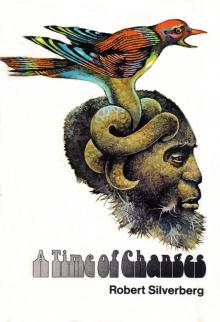 A Time of Changes
A Time of Changes This Way to the End Times: Classic Tales of the Apocalypse
This Way to the End Times: Classic Tales of the Apocalypse Beyond the Gate of Worlds
Beyond the Gate of Worlds Lord Valentine's Castle
Lord Valentine's Castle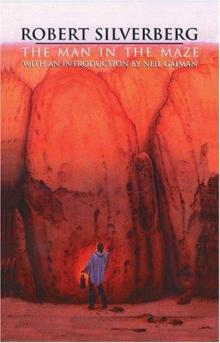 The Man in the Maze
The Man in the Maze Tales of Majipoor
Tales of Majipoor Time of the Great Freeze
Time of the Great Freeze The Collected Stories of Robert Silverberg, Volume 3: Something Wild Is Loose: 1969-72
The Collected Stories of Robert Silverberg, Volume 3: Something Wild Is Loose: 1969-72 Planet of Death
Planet of Death Trips: The Collected Stories of Robert Silverberg, Volume Four
Trips: The Collected Stories of Robert Silverberg, Volume Four In the Beginning: Tales From the Pulp Era
In the Beginning: Tales From the Pulp Era Hot Sky at Midnight
Hot Sky at Midnight Valentine Pontifex
Valentine Pontifex Up the Line
Up the Line Thorns
Thorns Amanda and the Alien
Amanda and the Alien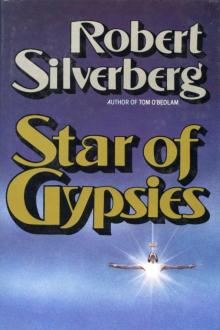 Star of Gypsies
Star of Gypsies Nightwings
Nightwings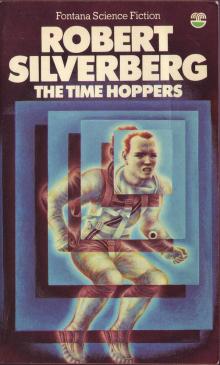 The Time Hoppers
The Time Hoppers Blood on the Mink
Blood on the Mink Dying Inside
Dying Inside The Last Song of Orpheus
The Last Song of Orpheus The King of Dreams
The King of Dreams The Stochastic Man
The Stochastic Man The Collected Stories of Robert Silverberg, Volume Seven: We Are for the Dark
The Collected Stories of Robert Silverberg, Volume Seven: We Are for the Dark The Millennium Express: The Collected Stories of Robert Silverberg, Volume Nine
The Millennium Express: The Collected Stories of Robert Silverberg, Volume Nine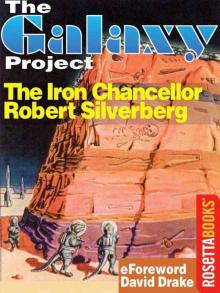 The Iron Chancellor
The Iron Chancellor Lord Prestimion
Lord Prestimion To Open the Sky
To Open the Sky The World Inside
The World Inside Chains of the Sea
Chains of the Sea The Collected Stories of Robert Silverberg, Volume Five: The Palace at Midnight
The Collected Stories of Robert Silverberg, Volume Five: The Palace at Midnight Postmark Ganymede
Postmark Ganymede The Second Trip
The Second Trip The Collected Stories of Robert Silverberg, Volume 4: Trips: 1972-73
The Collected Stories of Robert Silverberg, Volume 4: Trips: 1972-73 Son of Man
Son of Man Tom O'Bedlam
Tom O'Bedlam To the Land of the Living
To the Land of the Living To Be Continued: The Collected Stories of Robert Silverberg, Volume One
To Be Continued: The Collected Stories of Robert Silverberg, Volume One Shadrach in the Furnace
Shadrach in the Furnace The Chalice of Death: Three Novels of Mystery in Space
The Chalice of Death: Three Novels of Mystery in Space The Queen of Springtime
The Queen of Springtime To Be Continued 1953-1958
To Be Continued 1953-1958 Legends
Legends Roma Eterna
Roma Eterna To Live Again
To Live Again At Winter's End
At Winter's End Needle in a Timestack
Needle in a Timestack To Live Again and the Second Trip: The Complete Novels
To Live Again and the Second Trip: The Complete Novels Lord of Darkness
Lord of Darkness The Mountains of Majipoor
The Mountains of Majipoor The World Outside
The World Outside The Alien Years
The Alien Years The Book of Skulls
The Book of Skulls The Face of the Waters
The Face of the Waters Gilgamesh the King
Gilgamesh the King The Collected Stories of Robert Silverberg, Volume 6: Multiples: 1983-87
The Collected Stories of Robert Silverberg, Volume 6: Multiples: 1983-87 The Happy Unfortunate
The Happy Unfortunate Three Survived
Three Survived Cronos
Cronos Tower of Glass
Tower of Glass Legends II
Legends II The Planet Killers
The Planet Killers The Collected Stories of Robert Silverberg, Volume 2: To the Dark Star: 1962-69
The Collected Stories of Robert Silverberg, Volume 2: To the Dark Star: 1962-69 Downward to the Earth
Downward to the Earth Lord Valentine's Castle: Book One of the Majipoor Cycle
Lord Valentine's Castle: Book One of the Majipoor Cycle Hot Times in Magma City, 1990-95
Hot Times in Magma City, 1990-95 Hunt the Space-Witch! Seven Adventures in Time and Space
Hunt the Space-Witch! Seven Adventures in Time and Space Majipoor Chronicles
Majipoor Chronicles The Robert Silverberg Science Fiction Megapack(r)
The Robert Silverberg Science Fiction Megapack(r) Starman's Quest
Starman's Quest Car Sinister
Car Sinister Worlds of Maybe
Worlds of Maybe Fantasy The Best of 2001
Fantasy The Best of 2001 Revolt on Alpha C
Revolt on Alpha C Homefaring
Homefaring The Pardoner's Tale
The Pardoner's Tale Sailing to Byzantium - Six Novellas
Sailing to Byzantium - Six Novellas The Chalice of Death
The Chalice of Death Sundance
Sundance A Tip on a Turtle
A Tip on a Turtle Nebula Awards Showcase 2001: The Year's Best SF and Fantasy Chosen by the Science Fiction and Fantasy Writers of America
Nebula Awards Showcase 2001: The Year's Best SF and Fantasy Chosen by the Science Fiction and Fantasy Writers of America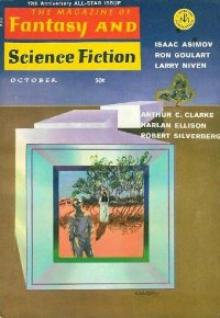 The Fangs of the Trees
The Fangs of the Trees The Palace at Midnight: The Collected Work of Robert Silverberg, Volume Five
The Palace at Midnight: The Collected Work of Robert Silverberg, Volume Five The Millennium Express - 1995-2009 - The Collected Stories of Robert Silverberg Volume Nine
The Millennium Express - 1995-2009 - The Collected Stories of Robert Silverberg Volume Nine Book of Skulls
Book of Skulls Passengers
Passengers Something Wild is Loose - 1969–72 - The Collected Stories of Robert Silverberg Volume Three
Something Wild is Loose - 1969–72 - The Collected Stories of Robert Silverberg Volume Three Multiples
Multiples Starborne
Starborne The Masks of Time
The Masks of Time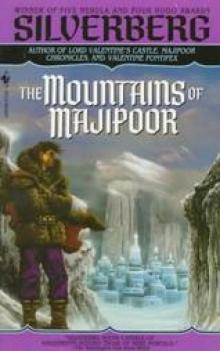 The Mountains of Majipoor m-8
The Mountains of Majipoor m-8 Multiples (1983-87)
Multiples (1983-87) Those Who Watch
Those Who Watch In the Beginning
In the Beginning Earth Is The Strangest Planet
Earth Is The Strangest Planet Collision Course
Collision Course Neutral Planet
Neutral Planet To the Dark Star - 1962–69 - The Collected Stories of Robert Silverberg Volume Two
To the Dark Star - 1962–69 - The Collected Stories of Robert Silverberg Volume Two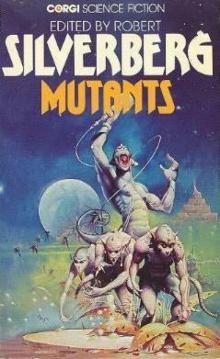 Mutants
Mutants Sailing to Byzantium
Sailing to Byzantium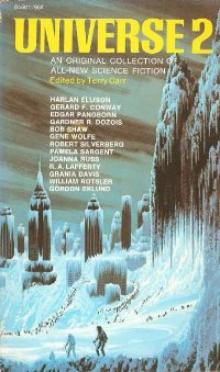 When We Went to See the End of the World
When We Went to See the End of the World Robert Silverberg The Science Fiction Hall Of Fame Volume One, 1929-1964
Robert Silverberg The Science Fiction Hall Of Fame Volume One, 1929-1964 To Be Continued - 1953–58 - The Collected Stories of Robert Silverberg Volume One
To Be Continued - 1953–58 - The Collected Stories of Robert Silverberg Volume One Valentine Pontifex m-3
Valentine Pontifex m-3 Gianni
Gianni Majipoor Chronicles m-2
Majipoor Chronicles m-2 We Are for the Dark (1987-90)
We Are for the Dark (1987-90) Waiting for the Earthquake
Waiting for the Earthquake Fantasy: The Best of 2001
Fantasy: The Best of 2001 How It Was When the Past Went Away
How It Was When the Past Went Away Beauty in the Night
Beauty in the Night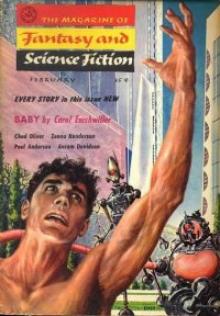 The Man Who Never Forgot
The Man Who Never Forgot The Book of Changes m-9
The Book of Changes m-9 Lord Valentine's Castle m-1
Lord Valentine's Castle m-1 This Way to the End Times
This Way to the End Times Queen of Springtime
Queen of Springtime Legends-Volume 3 Stories by the Masters of Modern Fantasy
Legends-Volume 3 Stories by the Masters of Modern Fantasy The Palace at Midnight - 1980–82 - The Collected Stories of Robert Silverberg Volume Five
The Palace at Midnight - 1980–82 - The Collected Stories of Robert Silverberg Volume Five Something Wild is Loose: The Collected Stories of Robert Silverberg, Volume Three
Something Wild is Loose: The Collected Stories of Robert Silverberg, Volume Three Multiples - 1983–87 - The Collected Stories of Robert Silverberg Volume Six
Multiples - 1983–87 - The Collected Stories of Robert Silverberg Volume Six Alaree
Alaree Three Survived: A Science Fiction Novel
Three Survived: A Science Fiction Novel Defenders of the Frontier
Defenders of the Frontier The New Springtime
The New Springtime We Are for the Dark - 1987–90 - The Collected Stories of Robert Silverberg Volume Seven
We Are for the Dark - 1987–90 - The Collected Stories of Robert Silverberg Volume Seven The Science Fiction Hall of Fame, Volume One 1929-1964--The Greatest Science Fiction Stories of All Time Chosen by the Members of the Science Fiction Writers of America
The Science Fiction Hall of Fame, Volume One 1929-1964--The Greatest Science Fiction Stories of All Time Chosen by the Members of the Science Fiction Writers of America Master Of Life And Death
Master Of Life And Death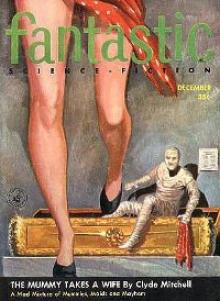 Choke Chain
Choke Chain Sorcerers of Majipoor m-4
Sorcerers of Majipoor m-4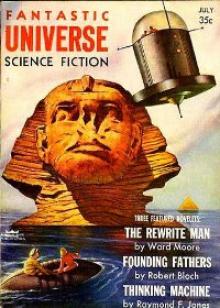 Absolutely Inflexible
Absolutely Inflexible Trips - 1962–73 - The Collected Stories of Robert Silverberg Volume Four
Trips - 1962–73 - The Collected Stories of Robert Silverberg Volume Four Hot Times in Magma City - 1990-95 - The Collected Stories of Robert Silverberg Volume Eight
Hot Times in Magma City - 1990-95 - The Collected Stories of Robert Silverberg Volume Eight Far Horizons
Far Horizons The Queen of Springtime ns-2
The Queen of Springtime ns-2 The Seventh Science Fiction Megapack
The Seventh Science Fiction Megapack Invaders From Earth
Invaders From Earth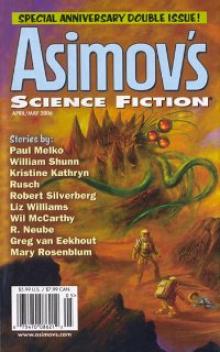 Hanosz Prime Goes To Old Earth
Hanosz Prime Goes To Old Earth The Macauley Circuit
The Macauley Circuit Science Fiction: The Best of 2001
Science Fiction: The Best of 2001 To the Dark Star: The Collected Stories of Robert Silverberg, Volume Two
To the Dark Star: The Collected Stories of Robert Silverberg, Volume Two Stochastic Man
Stochastic Man Legends: Stories By The Masters of Modern Fantasy
Legends: Stories By The Masters of Modern Fantasy To Live Again And The Second Trip
To Live Again And The Second Trip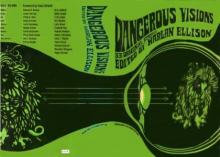 Flies
Flies The Silent Invaders
The Silent Invaders Ship-Sister, Star-Sister
Ship-Sister, Star-Sister